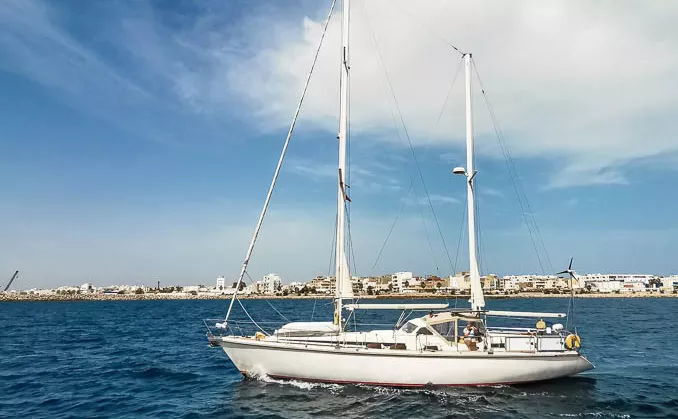Owning and operating a motor yacht is a dream for many. The allure of the open sea, the freedom to explore distant shores, and the luxury of onboard amenities are just a few of the attractions. However, for those who wish to operate their yacht alone, it’s essential to understand the practical limits of single-handed operation. This article delves into the factors influencing how large a motor yacht one person can handle, providing insights to help you make informed decisions.
Understanding Single-Handed Operation
Single-handed operation refers to managing all aspects of a yacht’s navigation, maintenance, and safety by oneself. This includes piloting, docking, anchoring, and routine checks. The feasibility of single-handed operation depends on several factors:
- Yacht Design and Features: Modern yachts equipped with user-friendly controls, automated systems, and ergonomic layouts can significantly ease the burden on a solo operator.
- Experience and Skill Level: A seasoned yachtsman possesses the knowledge and reflexes to handle challenging situations, making it possible to manage larger vessels alone.
- Physical and Mental Stamina: Operating a yacht requires physical strength and mental alertness, especially during adverse conditions or emergencies.
Factors Influencing Yacht Size for Solo Operation
Determining the maximum size of a motor yacht manageable by one person involves considering various elements:
1. Yacht Design and Technology
Advancements in yacht design have led to features that facilitate single-handed operation:
- Joystick and Fly-by-Wire Controls: These systems allow precise maneuvering, simplifying docking and navigation.
- Automated Anchoring Systems: With the push of a button, the anchor can be deployed or retrieved, reducing physical strain.
- Integrated Monitoring Systems: Centralized dashboards provide real-time data on the yacht’s systems, aiding in quick decision-making.
2. Experience and Training
A well-trained individual can handle more complex vessels:
- Navigation Skills: Understanding maritime charts, weather patterns, and navigational aids is crucial.
- Mechanical Knowledge: Familiarity with the yacht’s systems allows for troubleshooting and minor repairs.
- Emergency Procedures: Knowing how to respond to emergencies ensures safety and effective problem resolution.
3. Physical and Mental Demands
Solo yachting is physically demanding:
- Physical Fitness: Tasks like mooring, handling lines, and operating winches require strength and agility.
- Mental Acuity: Continuous vigilance is necessary to monitor surroundings, anticipate challenges, and make swift decisions.
Recommended Yacht Sizes for Solo Operation
While there’s no definitive answer, certain size ranges are generally more manageable for solo operators:
1. Small Motor Yachts (Up to 40 Feet)
- Maneuverability: Smaller yachts are more responsive and easier to handle in tight spaces.
- Docking: Single-handed docking is more feasible due to the yacht’s size and weight.
- Maintenance: Routine checks and maintenance tasks are less time-consuming.
Example: A 35-foot motor yacht with joystick controls and automated systems can be comfortably operated by an experienced individual.
2. Mid-Size Motor Yachts (40 to 60 Feet)
- Advanced Features: These yachts often come equipped with sophisticated systems that aid solo operation.
- Space and Comfort: Larger cabins and amenities provide enhanced comfort during extended voyages.
- Increased Responsibility: More systems require regular monitoring, necessitating a higher skill level.
Example: A 50-foot yacht with fly-by-wire controls, automated anchoring, and an integrated monitoring system can be managed by a solo operator with adequate training.
3. Large Motor Yachts (60 to 80 Feet)
- Complex Systems: Multiple engines, advanced navigation systems, and extensive amenities demand significant knowledge.
- Crew Assistance: While solo operation is possible, having a crew member can alleviate the workload.
- Safety Considerations: Handling emergencies may be more challenging alone, requiring thorough preparation.
Example: A 70-foot yacht with joystick controls, automated systems, and a spacious layout offers solo operation potential but is better suited with at least one crew member.
4. Superyachts (Over 80 Feet)
- Operational Challenges: The size and complexity make solo operation impractical.
- Crew Requirements: Professional crew members are essential for safe and efficient operation.
- Regulatory Compliance: Larger yachts must adhere to international maritime regulations, including crew certifications.
Example: A 100-foot superyacht requires a captain and crew for navigation, maintenance, and guest services.
Technological Aids for Solo Operators
Embracing technology can significantly enhance the solo yachting experience:
- Autopilot Systems: Maintain a set course, reducing the need for constant manual steering.
- Remote Monitoring: Allows the operator to check yacht systems from a smartphone or tablet.
- Docking Assist: Cameras and sensors provide real-time feedback, aiding in precise docking maneuvers.
Safety Considerations
Safety should always be the top priority:
- Life-Saving Equipment: Ensure the availability and accessibility of life jackets, flares, and other emergency tools.
- Communication Devices: Satellite phones and radios are vital for staying connected, especially in remote areas.
- Regular Drills: Practice emergency procedures to ensure readiness in critical situations.
Conclusion
The size of the motor yacht one person can handle varies based on design, technological features, personal experience, and physical capability. While small yachts up to 40 feet are generally manageable alone, advancements in yacht technology have made larger vessels more accessible to solo operators. However, it’s crucial to assess individual skills, invest in proper training, and prioritize safety to ensure a rewarding and secure yachting experience. Always consider consulting with professionals and conducting thorough research before undertaking solo voyages on larger yachts.

